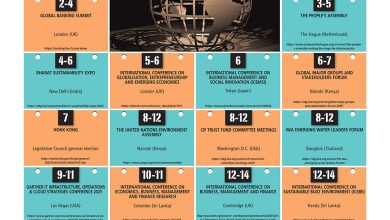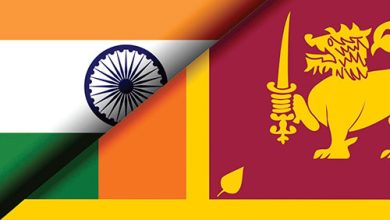GAZA PEACE MOVES
FATAH-HAMAS DEAL RAISES PEACE PROSPECTS
Yasmin Helal writes that the peace deal inked between Fatah and Hamas recently offers a glimmer of hope to the violence prone Gaza Strip’s beleaguered people

This isn’t the first time that Hamas and Fatah have attempted to strike a deal since the dismissal of the unity government and the civil war. The two sides have announced at least six peace agreements over the past decade although none has been successful.
The failed process began back in 2006 when Hamas leaders taking part in parliamentary elections for the first time turned out to be more popular than their opponents in Fatah and won the majority of votes.
As international demands grew louder for Hamas to renounce violence and recognise past peace deals with Israel, violence broke out between the rival factions in the Gaza Strip. The unity government was soon dismissed and a state of emergency declared in mid-2007. Hamas however, overcame Palestinian Authority forces and took control of the strip.
Since these events unfolded, the recent shift in dynamics across the Arab world has brought hope for reconciliation, which made the latest agreement possible. Under the deal, the Palestinian Authority will lift the sanctions it imposed on Gaza and Hamas will soon handover full control of the strip.
If all goes according to plan, Palestinian President Mahmoud Abbas might even pay a visit to Gaza in the coming months. It is also possible that unresolved issues such as the Hamas militia and network of tunnels under Gaza – which are used for fighting and smuggling weapons – would be brought to the negotiation table.
Hamas will also hand over control of the Rafah Border Crossing, which will allow Egypt to ease prevailing cargo restrictions. The crossing is Gaza’s lifeline and has been used repeatedly by Egypt to pressure Hamas, causing dire humanitarian crises in and around the strip.
Since Hamas – which is a Palestinian political faction that is deemed a terrorist group by the West – began ruling the Gaza Strip, the landlocked area has suffered from sanctions by neighbouring Egypt and Israel. Even the Palestinian Authority has restricted the supply of electricity to Gaza and stopped paying government salaries.
Some believe that had the agreement been delayed any longer, residents of Gaza – who were said to be living in an ‘open-air prison’ – were on the verge of rising up against Hamas. This pressure could have been what prompted Hamas to be more responsive.
Hamas leaders in Gaza tried to reach out to anyone who could help. In an effort to meet its opponents halfway, Hamas attempted to distance itself from the Muslim Brotherhood in Egypt in order to win the support of Egyptian President Abdel Fattah el-Sisi. After being haunted by the failure to unite Palestinians, 82-year-old Abbas welcomed the deal in the hope that he could end his presidential term on a positive note.
Bringing the leaders of Hamas and Fatah together to shake hands in agreement was not an easy task. Politician
and former Fatah leader Mohammed Dahlan told the media that he could find common ground with Yehiyeh Sinwar, the new head of Hamas in Gaza, both having spent their childhood in the Khan Younis refugee camp.
However, few have forgotten that back in 2007, Hamas seized power of the Gaza Strip by brutally killing many of Dahlan’s men. Previously, Hamas leaked documents in the 1990s and 2000s of torture and crimes committed by Dahlan and his men. For his part, Dahlan showed Hamas members no mercy when they were dragged into the interrogation rooms.
Surely, no one forgot those terrible events as representatives from Hamas and Fatah kissed and embraced over the agreement in Cairo in October.
But Hamas did warm upto Dahlan whether due to mounting internal pressure or in response to Sinwar’s nostalgic sentiments towards him. After all, Sinwar is a far cry from his predecessor Khaled Mashal who ruled Hamas from the comfort of his home in Qatar.
This change in leadership of Hamas led Dahlan – a close ally of the Egyptians and the Emiratis – to change his stance on Hamas.
But winning his approval wasn’t a walk in the park for the Gaza based faction. Hamas has been making an effort to rebuild relations with the new political centres of the region. The group recently severed ties with militants who caused turbulence in the province of Sinai, which separates Gaza from Egypt and the rest of Africa. The Sinai Peninsula, which is part of Egypt, is located in Asia.
Coincidentally or not, on the eve of signing the agreement, Hamas’ security forces arrested a prominent Salafi leader in Gaza – Salafi is the movement that el-Sisi has sworn to wipe out.
The fact that Hamas signed the agreement with Fatah under the auspices of el-Sisi, who is an ally of Israel, shows just how far the faction is willing to go these days.
And let’s not overlook the endorsement by Saudi Arabia and the UAE, where Dahlan has resided in recent years. The two countries have been keen to replace their rival Qatar as major donors of humanitarian aid and infrastructure improvements in Gaza.
With the growing influence of Iran and Turkey in the region, it wasn’t difficult for Israel to prioritise Egypt, the UAE and Saudi Arabia. Putting Hamas in talks with these states will make it more reliant on Sunni rather than Shiite power centres.
Soon after the deal was announced, in a show of good faith, Dahlan began pumping cash back into Gaza and facilitating the entry of fuel shipments to the strip’s only power plant.









If the agreement is to bring merely personal credit to President Abbas in his final years, it will end up as just another piece of paper. Stakeholders are not merely in Gaza. The bigger picture is the LAND and PEOPLE OF PALESTINE!